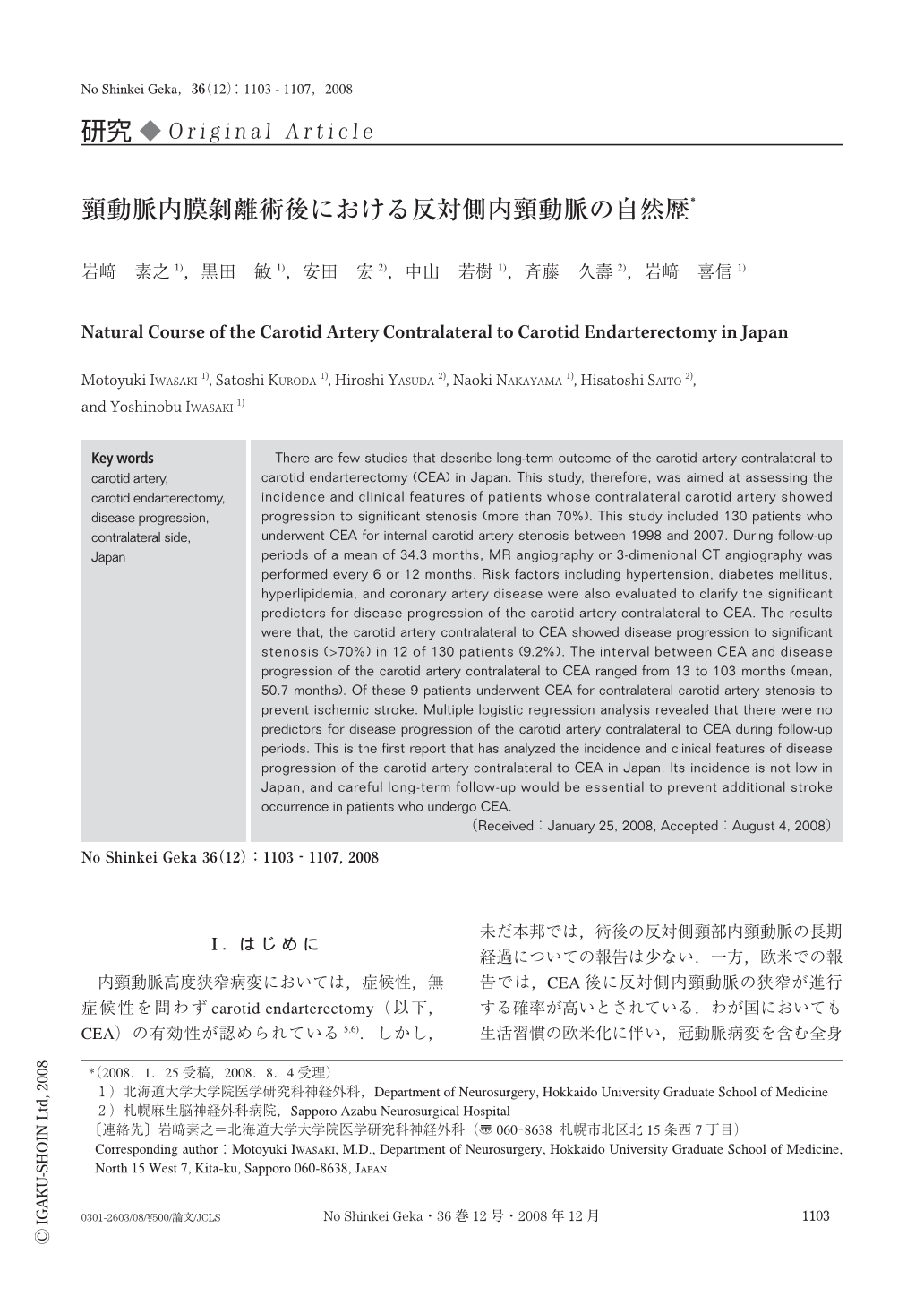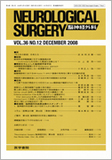Japanese
English
- 有料閲覧
- Abstract 文献概要
- 1ページ目 Look Inside
- 参考文献 Reference
Ⅰ.はじめに
内頸動脈高度狭窄病変においては,症候性,無症候性を問わずcarotid endarterectomy(以下,CEA)の有効性が認められている5,6).しかし,未だ本邦では,術後の反対側頸部内頸動脈の長期経過についての報告は少ない.一方,欧米での報告では,CEA後に反対側内頸動脈の狭窄が進行する確率が高いとされている.わが国においても生活習慣の欧米化に伴い,冠動脈病変を含む全身の動脈硬化性疾患が増加する背景を考慮すると,CEA術後の長期フォローアップは重要であると考えられる.
今回,われわれは,一側内頸動脈狭窄病変に対して実施したCEA術後の経過観察期間中に反対側内頸動脈に狭窄病変の進行が確認された例について,危険因子などの臨床像を検討したので報告する.
There are few studies that describe long-term outcome of the carotid artery contralateral to carotid endarterectomy (CEA) in Japan. This study, therefore, was aimed at assessing the incidence and clinical features of patients whose contralateral carotid artery showed progression to significant stenosis (more than 70%). This study included 130 patients who underwent CEA for internal carotid artery stenosis between 1998 and 2007. During follow-up periods of a mean of 34.3 months, MR angiography or 3-dimenional CT angiography was performed every 6 or 12 months. Risk factors including hypertension, diabetes mellitus, hyperlipidemia, and coronary artery disease were also evaluated to clarify the significant predictors for disease progression of the carotid artery contralateral to CEA. The results were that, the carotid artery contralateral to CEA showed disease progression to significant stenosis (>70%) in 12 of 130 patients (9.2%). The interval between CEA and disease progression of the carotid artery contralateral to CEA ranged from 13 to 103 months (mean, 50.7 months). Of these 9 patients underwent CEA for contralateral carotid artery stenosis to prevent ischemic stroke. Multiple logistic regression analysis revealed that there were no predictors for disease progression of the carotid artery contralateral to CEA during follow-up periods. This is the first report that has analyzed the incidence and clinical features of disease progression of the carotid artery contralateral to CEA in Japan. Its incidence is not low in Japan, and careful long-term follow-up would be essential to prevent additional stroke occurrence in patients who undergo CEA.

Copyright © 2008, Igaku-Shoin Ltd. All rights reserved.


